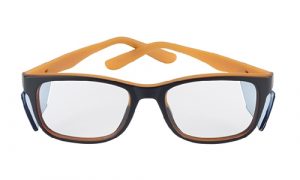Not everyone has 20/20 vision and they need the assistance of contacts or glasses to be able to see well. The only thing is what’s best for you, what should you choose – glasses or contacts? Both choices have positives and negatives. Here we will go through all the factors that might influence your choice on this matter. By the end of this article, you should be able to choose what’s best for you.
Glasses
Eyeglasses are separated into two groups: single vision glasses for distance issues, and multifocal glasses for near-vision eye problems such as reading and writing.
Multifocal glasses are featured in several groups based on several types of lenses:
- Bifocals: They come with a correction on the lower part of the lenses which makes them suitable for reading, and correction on the upper half of the lens that makes them suitable for the distance.
- Trifocals: This type of lens has one more area than bifocals. In addition to the upper part for distance, and the lower part for reading, the middle area is for middle vision.
- Progressive lenses: This type of lens has all of the features of bifocals and trifocals just that there is no dividing line. Instead, the distinctive areas smoothly transit between themselves.
Glasses were once only made of glass. Nowadays, they are mainly made of plastic and it makes them much lighter and sometimes they are treated with a special coating to protect the eyes of the user from the rays of the Sun. The only downside is that plastic is easier to get scratched.
Glasses: Pros
- Eyeglasses are low maintenance and easy. They don’t require a particular cleaning solution.
- They are available in a variety of frames (match your style).
- They are cheaper than contact lenses.
- They can be removed and placed back on easily.
- If your vision remains the same, there is no need to change them.

Glasses: Cons
- Eyeglasses are not suitable for sports or other high-intensity activities.
- There is a risk of distorting your vision. Especially if you got astigmatism or a strong prescription.
Contacts
Contact lenses are small discs made of glass or plastic and are placed on the eye to correct the vision of their user. There are two types of contact lenses: hard and soft. The hard ones are also known as rigid glass permeable.
The soft contact lenses that are made of plastic are the most popular ones as they are more comfortable than their glass counterparts. Also, they tend to hold more water which is another plus. There are several types of soft contact lenses:
- Daily wear type of soft lenses: They are worn during the day and cleaned at night. Typically, they are replaced on a schedule suggested by an eye doctor.
- Disposable soft lenses: You wear them once and never again.
- Extended-wear type of soft contact lenses: This type can be worn overnight as well. They need to be cleaned once or twice per week.
Hard contact lenses are less comfortable, but at the same time way more durable than the soft ones. They offer better vision if the user suffers from astigmatism or allergies. Both types of lenses, hard and soft, can be bifocal or multifocal. They simultaneously can correct faraway and up-close vision.
Contacts: Pros
- They move as you move your eye. That way nothing blocks your view.
- They provide more natural vision than eyeglasses
- They don’t get wet or fog up when it is rainy or cold.
- You can play all the sports, and they won’t get in your way.
Contacts: Cons
- They need much more maintenance than eyeglasses. Unless they are cleaned the right way, you run the risk getting a severe eye infection.
- Not suitable for people who have astigmatism. Toric contacts are contact lenses that are considered ideal for people with astigmatism. However, These types of lenses are very expensive.
- Frequent visits to the eye doctor are required
- In average they are more expensive than eyeglasses

